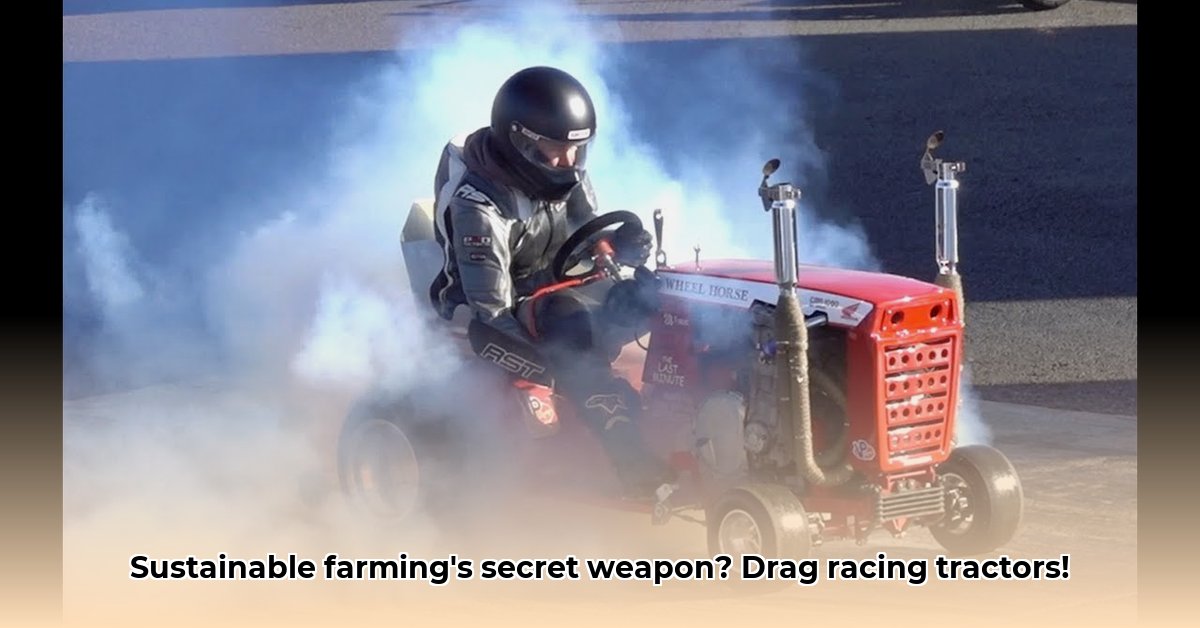
Can High-Powered Tractor Technology Contribute to Sustainable Agriculture?
The image of a massive tractor, boasting thousands of horsepower and designed for speed, clashes sharply with the image of sustainable agriculture. Yet, the engineering innovations behind these drag race machines may hold surprising potential for improving farming practices. This article examines this unexpected connection, exploring the technological advancements, environmental considerations, and potential pathways for adapting drag race tractor technology for a more sustainable future. For more on sustainable tractor technology, check out this informative resource: Solar Powered Tractors.
The Unexpected Link Between Power and Sustainability
Giant tractors, some exceeding 6,000 horsepower, are testaments to engineering prowess. Their advanced engines, custom modifications, and high-performance components represent a significant leap in power and efficiency. But can this translate into sustainable agricultural practices? The sheer power consumption and associated emissions pose a significant challenge. However, the underlying technological innovations may offer valuable insights applicable to the development of more fuel-efficient and environmentally friendly farm equipment. Could the principles of maximizing performance and efficiency, central to drag racing, be applied to reduce the environmental footprint of agriculture?
Advanced Technology: A Double-Edged Sword
Drag race tractors showcase innovations in engine technology, materials science, and design. These include super-efficient combustion systems and the use of cutting-edge materials. While these advancements are impressive, the sheer power output also leads to high fuel consumption and substantial emissions. The environmental cost of operating these machines, encompassing fuel use, maintenance, and transportation, significantly offsets potential benefits. The challenge lies in selectively adapting these technological advancements without replicating the substantial environmental burden.
Adapting Technology for Sustainable Farming: Picking and Choosing
The key lies in adapting, not simply replicating, the technology. The goal isn't to build 6,000-horsepower farm tractors, but to selectively integrate specific technological advancements to enhance efficiency and sustainability. This requires focusing on elements such as improved engine efficiency, lighter materials, and more precise control systems. The principles behind these advancements – optimization, precision, and data-driven decision-making – are crucial.
Knowledge Transfer: From Race Track to Farm Field
The engineering innovations developed for drag race tractors represent a valuable resource for agricultural researchers and equipment manufacturers. The insights gained from analyzing these extreme performance machines can inform the design of more efficient and environmentally friendly farm equipment. This requires proactive collaboration between researchers, manufacturers, and agricultural stakeholders.
A Collaborative Path Towards Sustainability
Successfully integrating elements of drag race tractor technology into sustainable agriculture requires a multi-faceted approach. This involves:
Manufacturers: Investing in research and development to identify and adapt relevant technologies from drag racing for agricultural applications. This includes exploring electric and alternative fuel options for farm machinery.
Researchers: Investigating the applicability of drag race tractor technology to techniques like precision farming, focusing on enhanced efficiency and reduced environmental impact.
Farmers: Integrating fuel-efficient equipment and precision farming methods to enhance resource management and minimize their environmental footprint.
Governments/Agencies: Providing funding and incentives to support research, development, and the adoption of sustainable agricultural technologies.
How to Adapt High-Powered Tractor Technology for Sustainable Farming: A Step-by-Step Approach
Key Takeaways:
- Utilizing technological advancements from drag racing to increase efficiency in sustainable agriculture is achievable.
- Adapting technology requires prioritizing efficiency over sheer power, focusing on resource optimization.
- Transitioning to electric or alternative fuel powertrains drastically reduces environmental impact.
- Precision agriculture utilizing GPS, sensors, and AI optimizes operations and minimizes resource waste.
- Data analytics and AI optimize resource use and reduce waste in agricultural practices.
The transition to sustainable agriculture is a complex journey, but the potential for advancements to increase efficiency while lessening environmental impact is undeniable. By embracing a data-driven, collaborative approach, and selectively integrating lessons learned from cutting-edge engineering, sustainable and highly efficient agricultural operations are within reach.